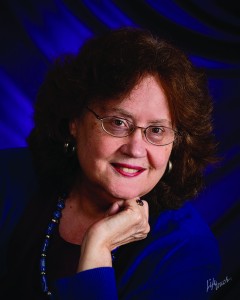 Travel in January turned out to be more of an adventure than many of us anticipated. Two events that BPI attends in January were in Washington, DC: Phacilitate’s cell and gene therapy conference (part of its Washington Leaders Forum) and the CASSS Well Characterized Biotechnology Products conference (along with two CMC strategy forums). These two events present topics that we see carried throughout the year, including FDA initiatives and current regulatory, quality, analytical, and manufacturing focus points.
Travel in January turned out to be more of an adventure than many of us anticipated. Two events that BPI attends in January were in Washington, DC: Phacilitate’s cell and gene therapy conference (part of its Washington Leaders Forum) and the CASSS Well Characterized Biotechnology Products conference (along with two CMC strategy forums). These two events present topics that we see carried throughout the year, including FDA initiatives and current regulatory, quality, analytical, and manufacturing focus points.
Organizers of both events were expecting record participation — and then came winter storm Jonas. Such conditions are outside my experience as an Oregonian; just a light dusting of snow in our valley is cause for school cancellations and road trouble. But I was impressed by the schedule adjustments throughout that week. Both conferences’ organizers canceled Monday programming and moved what sessions they could into the remaining days.
The Phacilitate Bioleaders Conference still drew about 400 people, one of that event’s largest turnouts. Look for more on its presentations and key issues in our April supplement. This event showcased the increasing maturation of progress toward cell/gene therapeutics. Only a few years ago, many speakers were physicians and hospital researchers unfamiliar with commercial expansion. Regulatory, business development, and logistical issues were considered things to deal with later on, rather than as critical elements of early product and process development. A common expectation was that no matter what these therapies would cost, their offerings of superior disease control (even cures) would be understood by enthusiastic patients, physicians, and insurance companies.
What a difference a few years (and sobering real-life experience) can make. Presentations this year highlighted significant partnership activities, new technologies, some successful (massive) financing rounds and significant acquisitions, and late-stage trial successes. Speakers stressed the need for reducing labor and costs. Some described regulatory progress, especially in Japan. Presenters showed data regarding costs and losses that must be prevented in managing supply chain and logistics. More than one speaker stressed that commercial success cannot come with manual processes, and we saw promising new automation technologies.
Meanwhile, 680 people managed to get to the CASSS event (a record attendance despite the weather woes), although Monday’s forum had to be postponed until summer. The highlight of WCBP is always its large FDA participation. While focusing on process control strategies, speakers presented new technologies for characterization, stability testing, and specifications setting. Regulators offered perspectives on speeding product development while managing risk. We learned of international regulatory trends and developing guidelines for different product classes (e.g., combination products).
For an editor, it is all a “candy store” of topics to pursue. I think all meeting participants deeply appreciated the organizers’ skillful management of schedule adjustments and speaker substitutions. The next big event for us (sure to be less subject to weather-related scheduling havoc) is the 14th–17th March BioProcess International West conference(s) in Oakland, CA (www.ibclifesciences.com/BPIWest). We hope to see many of you there.
